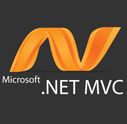
MVC stands for Model-View-Controller. Asp.Net Mvc is an architecture to develop ASP.Net web applications in a different manner. Web applications developed with ASP.Net MVC are even more SEO (Search Engine) friendly. MVC is a standard design pattern some types of Web application will benefit from the MVC framework.
Models: These are the classes that contain data. They can practically be any class that can be instantiated and can provide some data.
Controllers:These are the classes that will be invoked on user requests.The main task of these are to generate the model class object.
Views: These are simple pages containing HTML and C# code that will use the server side object.
Deccansoft is the one of the best training center in twin cities we provide ASP.Net MVC training in depth knowledge of the course with practical examples for each topic and also we provide ASP.Net MVC online training . Training is provided by Mr. Sandeep Soni who has 17 years of experience in teaching. We provide you with best Asp.net MVC tutorials for each and every topic.